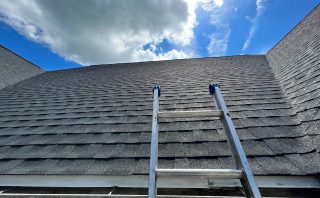Cracking the code of effective siding repairs requires a meticulous blend of scientific principles and practical techniques. At its core, the repair process hinges on understanding the intricate dynamics of materials, weather conditions, and structural integrity. One crucial aspect lies in comprehending the diverse compositions of siding materials, ranging from vinyl to wood, each presenting unique challenges and requirements. For instance, vinyl siding demands a different approach compared to repairing wooden siding due to variations in durability, flexibility, and susceptibility to environmental factors. The science of siding repairs delves deep into the physics of materials, considering factors such as expansion, contraction, and moisture absorption. A profound understanding of how these elements interact is vital in executing repairs that withstand the test of time. Take, for instance, the impact of temperature fluctuations on vinyl siding. As temperatures rise and fall, vinyl expands and contracts, necessitating repairs that accommodate these fluctuations without compromising structural integrity. Failure to consider such factors can lead to premature deterioration and recurring issues, highlighting the importance of applying scientific principles to repair methodologies.

Furthermore, effective siding repairs entail a thorough assessment of environmental influences. From harsh sunlight to torrential rain, external elements pose significant challenges to the longevity of siding materials. Scientific analysis of weather patterns, moisture levels, and UV radiation exposure aids in devising repair strategies that mitigate these threats. Utilizing advanced coatings and sealants engineered to withstand UV rays and moisture infiltration can significantly enhance the durability of repaired siding, ensuring long-lasting results even in the face of adverse weather conditions. Beyond material science, the art of siding repairs encompasses structural engineering principles. Understanding load-bearing capacities, weight distribution, and anchoring techniques is essential for reinforcing damaged siding sections and preventing future issues. Structural deficiencies can compromise the stability of siding installations, making it imperative to employ scientifically-backed repair methods that address underlying structural weaknesses. Whether it involves replacing rotted wood panels or reinforcing support beams, structural integrity forms the bedrock of effective siding repairs.
Moreover, the science of siding repairs extends to the realm of aesthetics and design. Repairing siding is not merely about restoring functionality; it is also about enhancing curb appeal and preserving architectural harmony. Siding Repair in Martinsburg WV color-matching techniques, texture replication, and precision craftsmanship are paramount in achieving seamless repairs that seamlessly blend with the existing facade. Leveraging advancements in digital imaging and color calibration technologies enables artisans to achieve unparalleled accuracy in color matching, ensuring repaired sections seamlessly integrate with the surrounding siding. In essence, cracking the code of effective siding repairs is a multidimensional endeavor that bridges the gap between science and craftsmanship. By harnessing the principles of material science, environmental analysis, structural engineering, and aesthetic design, professionals can execute repairs that surpass mere restoration, transforming damaged siding into resilient, visually stunning installations. In an era where sustainability and longevity are paramount, mastering the science of siding repairs is indispensable for preserving the integrity and beauty of architectural exteriors for generations to come.
